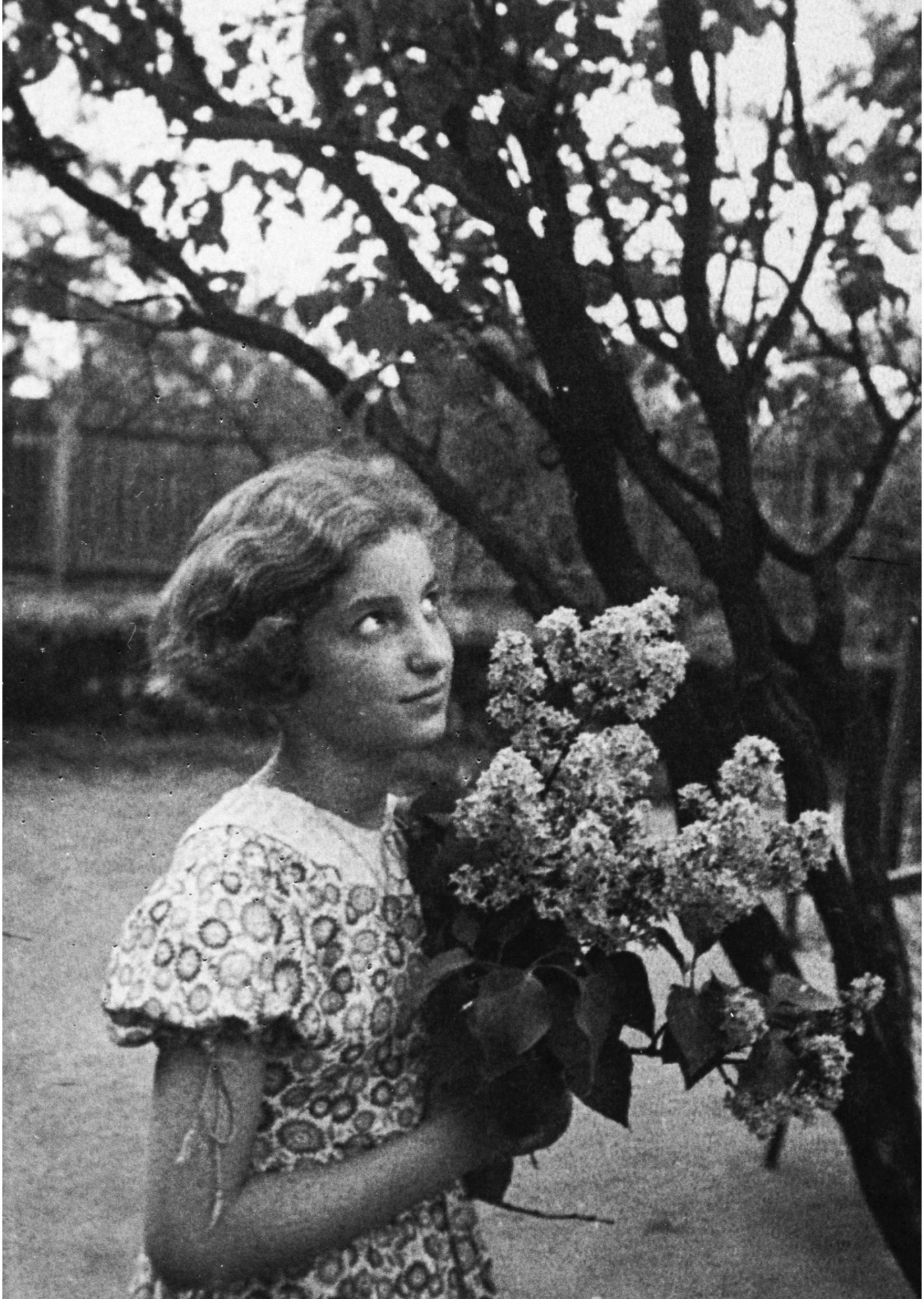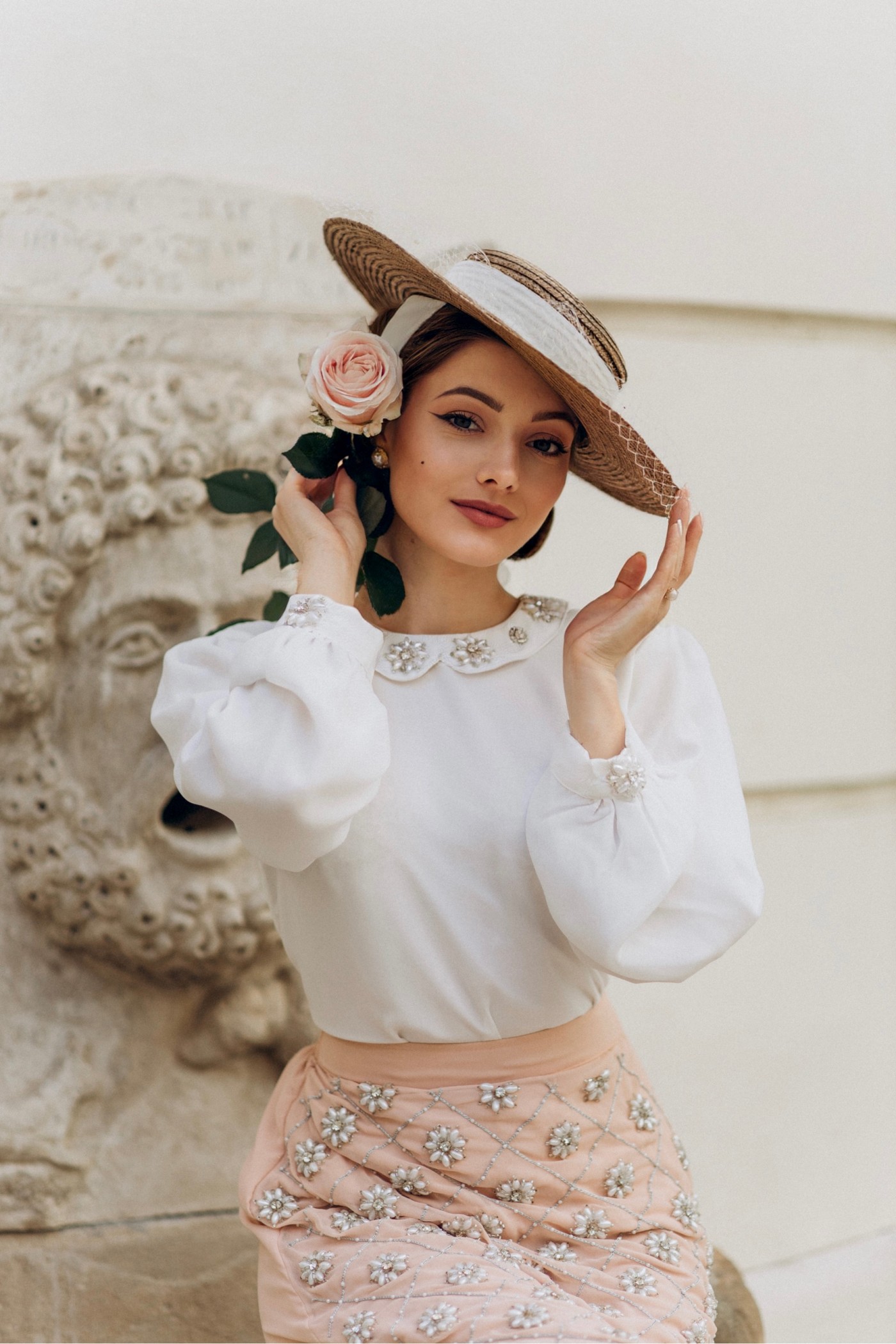- youtube
- bluesky
- Home
- About
- Costume Journal
- Membership
- Conference & Events
- Grants & Awards
- News & Social
In this week’s blog, Fashion historian, Jeordy Farnell, explores the ways in which dress facilitated or inhibited the visual integration of female Kindertransport refugees into wartime English society, and what we may learn from their experiences today.
It is well established that dress can serve as a means of conveying meaning to others. But in times of hardship, what do our clothes communicate to those around us? My research has focused on the dressed experience of Kindertransport refugees. While I focus primarily on the photos of one young woman, my research is supported by the oral history testimonies of other Kindertransport refugees. Together, these sources provide insight into the ways in which dress facilitated or inhibited the visual integration of these young women into wartime English society.
Lorraine Sulzbacher arrived in England in April of 1939 as a refugee, having fled Germany by train at the age of 14. She was part of what later became known as the Kindertransport: the evacuation of roughly 10,000 children from Germany, Austria and Czechoslovakia to Britain between December 1938 and September 1939. Most of these children, aged 0-17 years, were culturally, ethnically, or religiously Jewish.
For these young, female, Jewish refugees, blending in was tantamount to survival. According to a booklet entitled While You Are in England: Helpful Information and Guidance for Every Refugee (1938), this could be accomplished by following two sartorial rules. The first was that clothing should be understated and conventional, and the second was that it adhere to contemporary understandings of modesty and decorousness. While You Are in England advises, “the Englishman greatly dislikes ostentation, loudness of dress or manner or unconventionality of dress or manner. The Englishman attaches very great importance to modesty... and quietness of dress and manner” (12-14). This advice, written and distributed by members of the pre-existing Anglo- Jewish community, was in response to anxieties that the visibility of Jewish refugees would exacerbate rising antisemitism in England. Even so, it reflects the expectations of English society in general. Adherence to these sartorial principles allowed refugees to integrate into English society by blending in. Failure to adhere segregated them visually and socially. Indeed, clothing, as a changeable visual signifier, was one of the most accessible means refugees had for passing as English. They could not shed their accents, nationalities, or ethnicities, but they could change their clothes. Dress thus functioned as a visual representation of integration into English society.
The first image depicts Sulzbacher with her foster family, and was likely taken to commemorate her arrival. Despite body language that indicates, at least for the sake of the photo, Sulzbacher’s acceptance and integration into this English household, this image would have also served as a reminder of the absence of her biological family and Sulzbacher’s displacement. Sulzbacher wears a very neat and well cut, if plain, dress. It is understated, as While You Are in England advises. Her immaculate appearance, complete with perfectly styled hair, does visually differentiate her from her foster family, despite body language that suggests her acceptance. When compared with the ensembles Sulzbacher is depicted wearing in Germany, however, this outfit is cleverly plain and simple.
The second image was taken in Sulzbacher’s parent’s back yard a few months before she left for England. She poses with fresh lilacs, which complement the playful print of her dress. This dress has a lace collar, puffed sleeves with ribbon ties, and was likely colourful, all of which communicate youthful gaiety. Comparatively, the outfit in the first photo is subdued, and a much better choice for blending in according to the advice proffered by While You Are in England. The dress in the second image is incongruous with the expectations people in England had of what refugees should look like. While Sulzbacher does stand out from her foster family in Image 1, she does not appear out of place. Had she been wearing a dress like that in Image 2, she would have appeared in dissonance with those around her, visually reinforcing her displacement and otherness.
This was the reality for many refugees who struggled to fit in with the sartorial social expectations of their host country. They stood out, not because they looked unkept or disheveled, but rather because their clothing was too nice. This was especially true of those coming from middle-class lives. Refugees fleeing Europe tended to take only their best clothes with them. These clothes were hoped to last the longest, and were intended to allow refugees to look and feel presentable upon arriving in their host country. This method of selecting clothing was not always well-received by the English, and in some cases it led to open hostility. Refugees’ chic, individualistic tailor-made clothes were incongruous with English perceptions of refugees’ social standing. As stateless asylum seekers, refugees were considered near the bottom of the social hierarchy, and were expected to look the part. By dressing their best, they were unintentionally undermining English social order.
It is easy to believe that we have moved beyond contrived conventions of how refugees should look and behave. I was intrigued, therefore, when I saw the post in Image 3 while casually scrolling Instagram last June.
Ukrainian vintage content creator and digital consultant Anastasiia Nova (@s.nova.vintage on Instagram) shared about her experience as a well-dressed refugee living in Bratislava. On June 7, 2022 she wrote ‘“You don’t look like a refugee.” How often I’ve heard that!’ She goes on to describe the comfortable life she had before the war, and how it contrasts to the life she is living now. She states, ‘And if you see someone from Ukraine, who still looks nice, it doesn’t mean, that this person is super rich and happy. We are just trying to move forward, to live our lives. We don’t suppose to be sad, crying and in dirty, awful clothes. We have enough pain inside, don’t make us feel guilty about our appearance [sic].’
Sulzbacher and her fellow kindertransport refugees strived to dress inconspicuously, with the right clothing facilitating visual integration into English society. That similar pressure for refugees to dress to fit a stereotype persists today seems incredible, yet persist it does. Surely it is time to leave behind preconceptions that displaced persons should appear shabby, miserable, and impoverished. I find it fascinating that such sartorial prejudices prevail, and wonder at what others have survived into the 2020s.
Jeordy Farnell is a London-based historian interested in dress history, social history, and material culture. She obtained a BA in History at KCL in 2018, and her MA in History of Art at the Courtauld Institute of Art in 2019.
Check out Jeordy’s Instagram and LinkedIn! And read about her extended research here: Jewish Women, English Dress: From Kindertransport to Women in Uniform in Wartime England
Image rights: Jeordy Farnell; Images from Jewish Museum London
The Costume Society is a friendly and passionate community who aims to promote the study of historical and contemporary dress, and bring like-minded people together including students, re-enactors and museum staff. Click here to become a member today.
Image gallery

Figure 1: 'Lorraine Sulzbacher with foster family' 1939 (371.1), Jewish Museum London Archives.

Figure 2: 'Loraine Sulzbacher holding a bunch of lilacs' 1939 (361.14), Jewish Museum London Archives.

Figure 3: 'Anastasiia Nova, vintage content creator, digital consultant, and Ukrainian refugee based in Bratislava.'

Figure 3: 'Anastasiia Nova, vintage content creator, digital consultant, and Ukrainian refugee based in Bratislava.' Photo by Dariya Smolina,

Figure 4: 'Peter Needham and other kindertransport refugees outside the Prague Airport before departing for Great Britain on January 12, 1939.' Imperial War Museum, © IWM HU 88871. (link to object here)

Figure 5: 'Dress worn by Alicia Rottenberg while in hiding. It belonged to her mother, and was brought to England when Alicia escaped via kindertransport.' Imperial War Museum, © IWM UNI 11461.